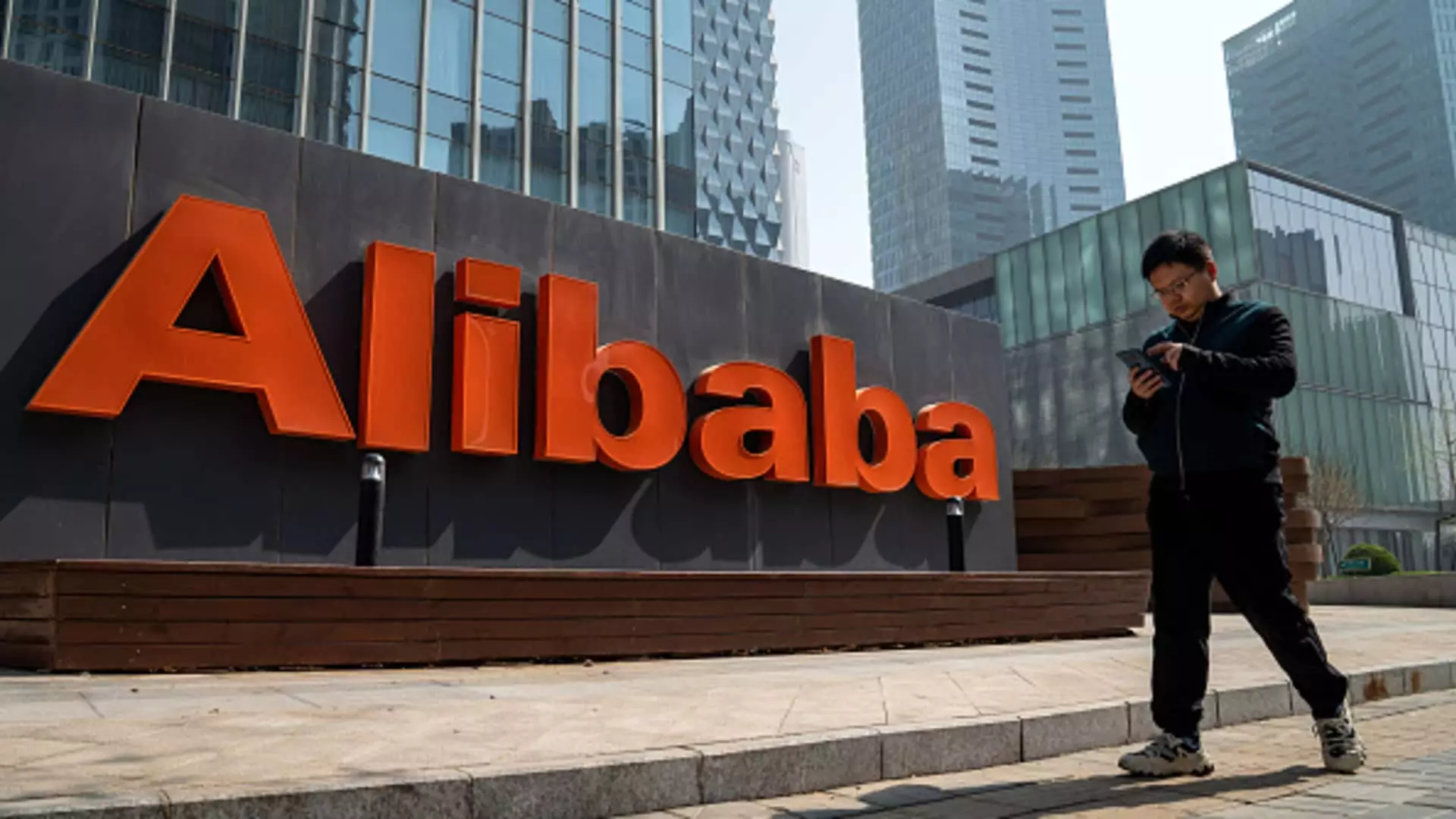Alibaba Group, the titan of Chinese e-commerce, recently reported its quarterly earnings that juxtapose remarkable profit growth with disappointing sales figures. As the world’s second-largest economy continues to grapple with sluggish consumer spending, this report places Alibaba’s performance at a critical juncture. The earnings announcement not only highlights the company’s financial acumen but also reflects the broader economic landscape in China.
In the September quarter, Alibaba reported a striking 58% increase in net income, amounting to 43.9 billion Chinese yuan ($6.07 billion). This performance is largely attributed to improvements in equity investments, a strategy that has paid dividends in the face of declining operational revenues. Analysts had estimated a significantly lower profit of about 25.83 billion yuan, showcasing the company’s ability to navigate tough financial waters.
However, the revenue figures tell a different story. Total sales reached 236.5 billion yuan, representing a mere 5% year-on-year growth, which fell short of the anticipated 238.9 billion yuan. This discrepancy raises concerns about the sustainability of Alibaba’s revenue growth, especially in a climate where consumer sentiment remains tepid. Despite the profit surge, these sales figures underscore a critical vulnerability in the company’s core operations.
Alibaba’s results arrive amid a challenging backdrop for China’s retail market. With broader economic struggles impacting consumer spending, e-commerce giants are compelled to pivot strategies in response. Recent numbers from JD.com echo similar concerns, with the competitor also missing revenue expectations just a day before Alibaba’s announcement. This trend illustrates systemic issues within the e-commerce landscape, which has become increasingly competitive and influenced by external economic conditions.
Given the recent stimulus measures introduced by the Chinese government, including a substantial 1.4 trillion yuan package, stakeholders are eager to see if these efforts will catalyze a resurgence in consumer behavior. Initial signs are promising, with a 4.8% increase in retail sales reported in October, suggesting there may be a gradual recovery. The highly anticipated Singles’ Day shopping festival further acts as a bellwether for national consumer confidence and overall market health, with Alibaba emphasizing a boost in gross merchandise volume during this vital shopping period.
Emerging Opportunities in International Markets
While Alibaba has been confronted with significant challenges within China, its international branches like Lazada and Aliexpress have evidenced resilience, posting a remarkable 29% surge in sales, reaching 31.67 billion yuan year-on-year. This internationalization strategy may prove pivotal as domestic growth plateaus. Expanding into foreign markets offers a safety net against the volatility of the Chinese economy and allows Alibaba to leverage its existing e-commerce infrastructure.
Furthermore, Alibaba’s Cloud Intelligence Group demonstrated a 7% increase in sales to 27.65 billion yuan, with a noted acceleration in growth rates. Such diversification is essential as the company endeavors to transition toward a future bolstered by technological advancements, particularly in Artificial Intelligence (AI). The CEO’s acknowledgment of double-digit growth from public cloud products and triple-digit expansion in AI-specific offerings signals a strategic pivot that could redefine Alibaba’s growth trajectory.
Alibaba’s financial results encapsulate a company at the crossroads, showcasing tremendous potential yet constrained by an unpredictable domestic market. The 58% profit increase speaks volumes about the company’s adeptness at managing its investment portfolio, but the lackluster sales figures raise critical questions about its operational resilience.
As Alibaba outlines its vision for future growth—focusing on AI capabilities and international expansion—its success will hinge on navigating the complex interplay between market conditions and consumer sentiment. Investors will continue to scrutinize how well Alibaba adapts to internal and external pressures, as the company strives to maintain its status amid increasing competition both at home and globally. With its eyes set on innovation and market leadership, Alibaba’s next moves will define its path in an ever-evolving economic landscape.

